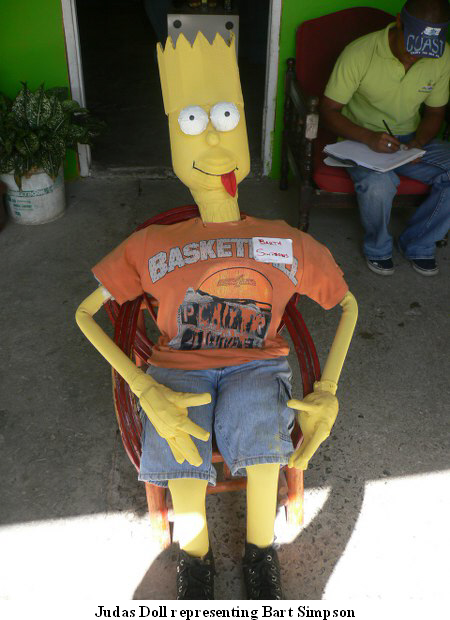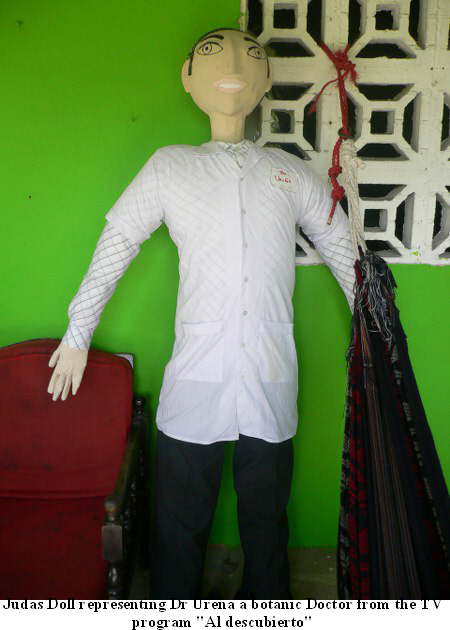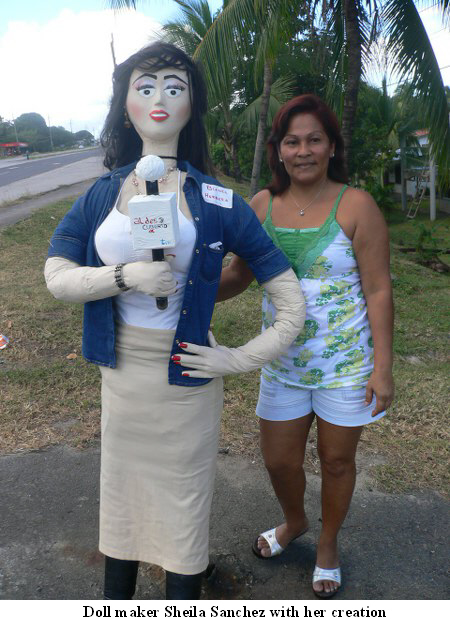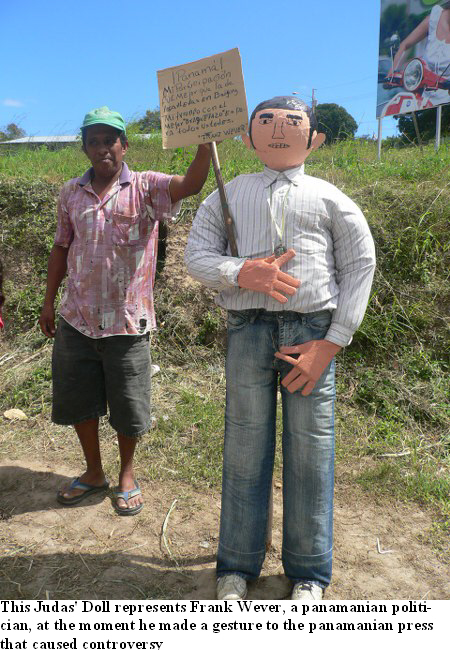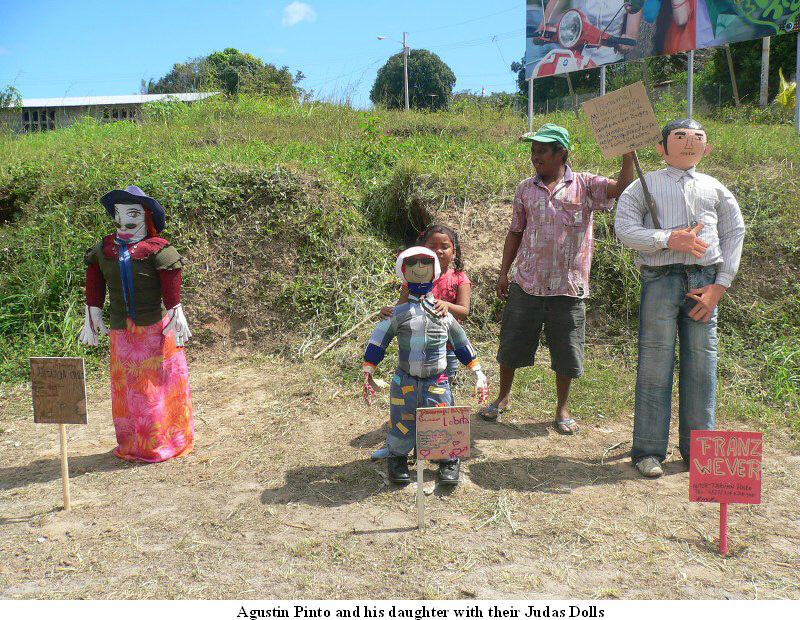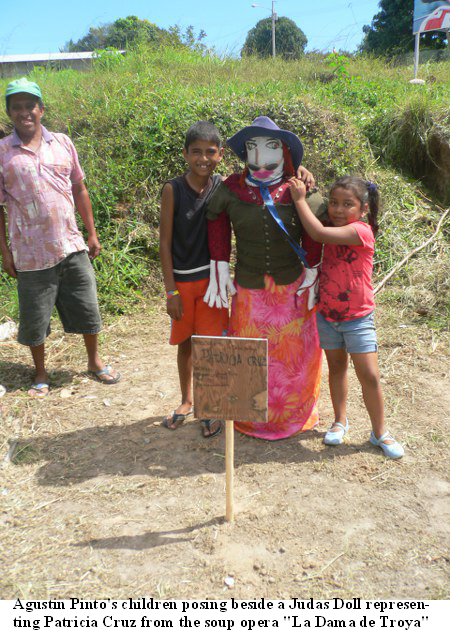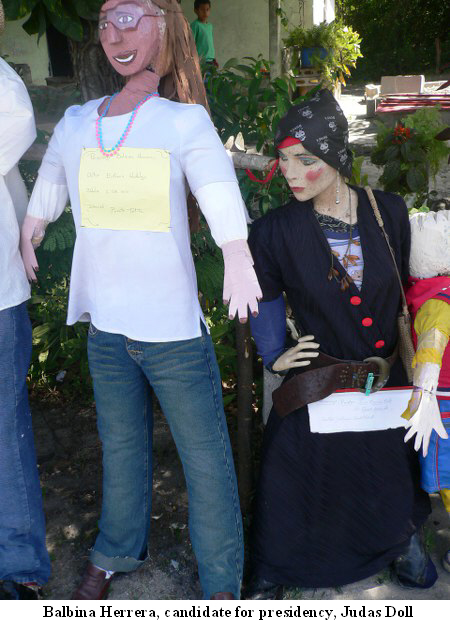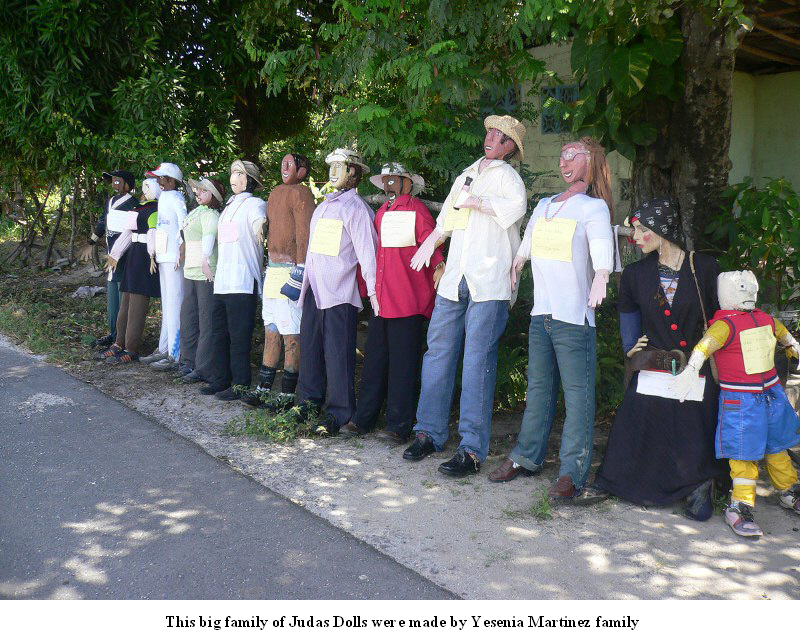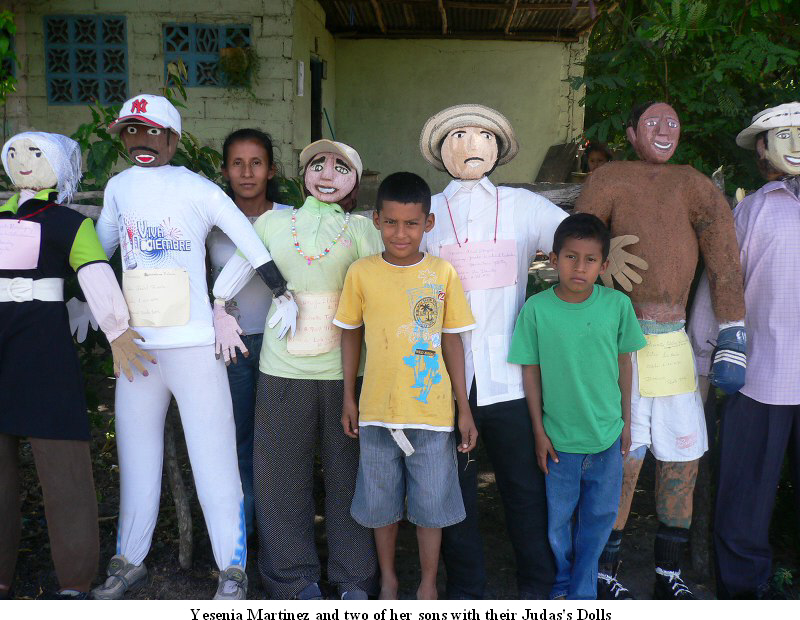Panama's Old Year Judas Doll Tradition
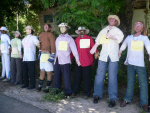
If you drive the Inter American Highway in Panama between Chame and San Carlos, during the last weeks of December, you will see homemade “dummies” displayed along the sides of the road standing in front of people’s homes. Colorfully dressed, these life-size, life-like effigies take on a striking resemblance to everyday people. Famous personalities, children, farmers, doctors, seniors and other walks of life are represented. The “dummies” are a popular end of year tradition for Panamanian families. Called Judas Dolls or Old Year Dolls, they are dressed in old clothes and made entirely of recycled materials. Coconuts, banana leaves, straw, dried branches, discarded cans, cardboard and old pillows are some of the items are used to create the heads and bodies. Then faces are painted and accessories adorned to give the doll its personality.
According to tradition, Judas Dolls represent the passing year. They hold all that would rather be forgotten and left behind. On December 31st, the dolls are loaded with firecrackers, and ignited with fire at midnight. Panamanians ritualistically burn the past and welcome a clean slate for the New Year.
In the weeks preceding their demise, the dolls draw the attention of onlookers. Their makers like, Agustín Pinto often take advantage of the opportunity to express a humorous opinion. One year Agustín’s doll, represented a popular politician’s moment when he displayed a less than exemplary behavior to the press.
The tradition of the Judas Doll is a long standing foundation stone of Chame’s cultural heritage. To preserve the tradition in the face of modernization, a local political figure Arturo Araúz runs a yearly contest covering the area from Chame to San Carlos. From December 22 to 28, judges travel the stretch of highway from Chame to San Carlos and take note of the dolls. Points are awarded for creativity, family participation, presentation, coloring and the resemblance to the personality the doll is trying to represent. On December 28th, the homes of the winners are visited and prizes are awarded ranging from $300 to $25.
Sheila Sanchez Figueroa, a resident of San José has been participating in the contest for the past 15 years. It is a tradition her children have grown up with. Like most of the other participants, she sells her dolls once the contest is over, keeping one for the family’s bonfire. On New Year’s Eve, Sheila’s immediate and extended family gather to celebrate the coming year and burn a doll at midnight.
If you would like to get in on the Panamanian tradition of Judas Doll burning this year, remember that most houses that have dolls in front will sell their dolls once the contest is over. Perhaps there is a particular representation standing along the roadside you would like to see go up in flames. Knock on the family’s door to buy the doll and have yourself a flaming entry into the New Year!
(This article was first run on Dec 23, 2008)


